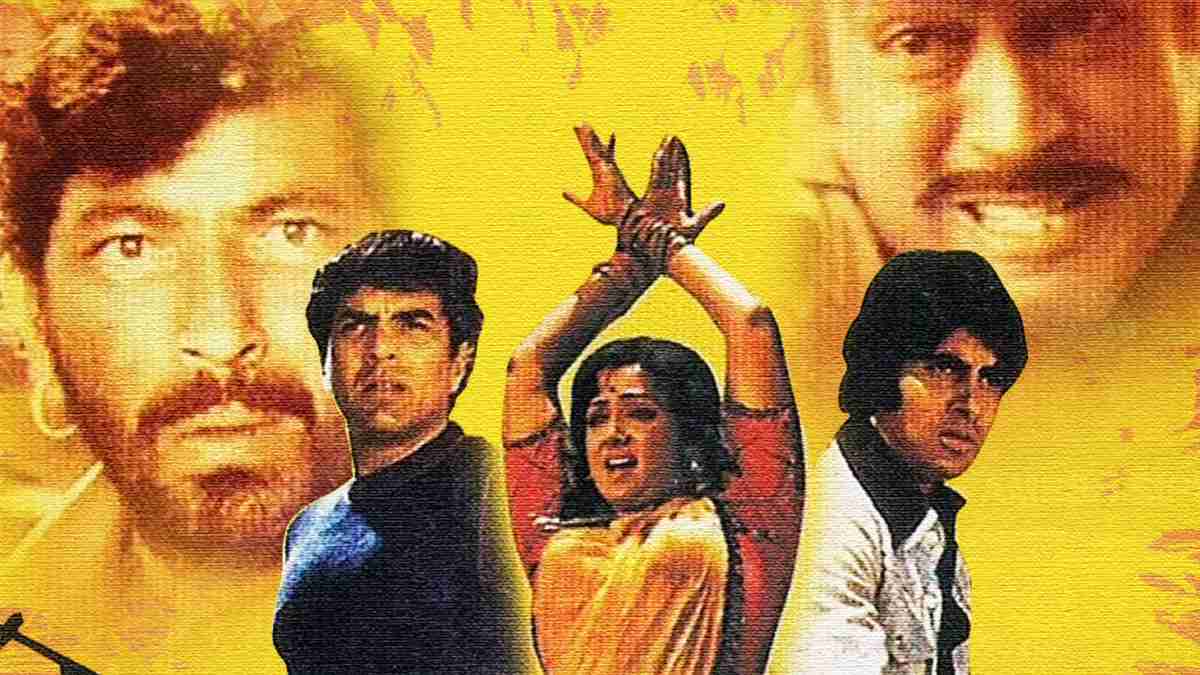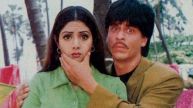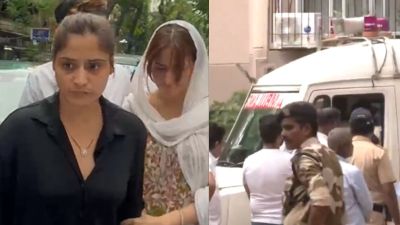As the Indian cult classic Sholay, in its uncut and fully restored version premieres globally in Italy today it triggers nostalgia of countless die hard fans of arguably the greatest Hindi film ever made.
When one spotted the news about the open air screening of the uncut Sholay at Piazza Maggione, that is hosting Cinema Ritrovato Festival in Bologna, Italy, on Friday, the June 27, the mind immediately speed-trotted back to the days when the film released fifty years ago to a slow and unsure start.
Its makers Messers Sippy and company were left wondering if they had blundered and were contemplating whether they should change the ending of the film as not many Indian movie goers were used to seeing of the main protagonists in the film dying. Amitabh Bachchan, playing Jai, dies in the arms of Dharmendra after suffering a barrage go bullets from Gabbar’s men, and the garam dharam then goes after the baddies.
And just about the time when the film makers, its lead actors and writers Salim-Javed were about to congregate to decide whether to reshoot the film to change the ending, numbers from the ground suggested change of mood and people beginning to flock to theatres.
The pleasantly shocking thing is that even today the film draws in crowds in a similar manner, Recutting across age brackets, making it a film that is loved, and lived, across generations — a great achievement for any movie in India.
Which is why, when Sholay makes a formal re-entry into the global film market with its retro edition the films die hard fans like me launch selves into Sholaydom, as it were.
At the very mention of Sholay, I thank my stars, and the media organisation I was working in at the time in 2008, and the Karnataka Assembly elections that I went to cover — for giving me a chance to relive and become a part of the Sholay in a manner that one can imagine.
I went to the spot, Ramanagaram, a small sleepy town adjacent to Bangalore (as it was called then), that hosted the Ramgarh village that was created — took two years to build the entire village, with its Thakur’s Haveli, the water tank, the temple and lake et all — and later three years for the film Sholay was shot, and spent time with the villagers some of whom were part of the making of Sholay as being bit role players, and helping with construction of the sets and generally becoming part of the crowd scenes.
Also Read: Sholay Original Ending Explained: Why The Conclusion Of This Cult Classic Was Changed? Deets Inside
So in circa 2008, yours truly was feeling on top of the world when walking on the same four boulders walking on which with a cruel smile and a belt in his hand — Gabbar – Amjad Khan – Singh entered the collective psyche of every Indian film watcher. Today it is impossible as the bounders in Gabbar’s den, are sealed off as a private company got permission to build a resort there.
But the existence of India’s only Vulture sanctuary there, put paid to the efforts of the private builder as wildlife and nature activists got courts to put a full stop to the well laid plans of a tourism resort in the area.
But even today, many Youtubers and die hard Sholay fans visit Ramanagara, on Bangalore-Mysore expressway, for a peep at the place where the film was made. But none of them can access the Gabbar’s den that one could reach a few years ago.
One can reach the temple located at the foothills of the rocky terrain that hid Gabbar’ den at a height. But area near the temple with access to the den is now fenced off and no one is allowed to trek upstairs. The place known as Ramdevara Betta hosts the country’s first and only Vulture sanctuary.
More over, the widened Bangalore-Mysore expressway has cut through the area where parts of the film Sholay were shot, but most of the places were Sholay village was built remain as they were. Does one feel sad that one can no longer walk on the same boulders that the Great Gabbar did, of course yes.
Recalling those moments as I do today when the uncut and modified Sholay makes an appearance at a film festival in Italy, it sure was an exciting moment for me when I spotted the boulders and I made a dash for them.
But to do that, had to squeeze through a small opening among the bushes and step into the open space encircled by huge boulders that served as Gabbar’s “operational headquarters”. For me it was a tad difficult to climb up to the Den, but it was easy for the villagers who live and breathe every moment of their life associated with the film.
Villagers compete with one another in displaying their knowledge of Sholay and its making. Almost everyone is privy to each and every detail as they even today live, eat and sleep Sholay, and keep watching the movies pretty regularly, either individually now and collectively as they had been doing – in olden days watching the film on rented VCRs.
Which is why, it was pretty normal when two or three hands pointed out to a tree, at the spot where once stood the water tank from atop which Dharmendra (Veeru) plays out his suicide drama to win the hands of Basanti – Hema Malini. The Basanti-Veeru love point, by the pond side, that location has still some water in it and locals vow that this was the same spot where Hema Malini confronted Gabbar’s thugs and escapes in her Basanti-pulled Tonga. In its neighbourhood, villagers said, a temple was erected where Hema Malini prays for a good husband , only to find Veeru playing the god himself.
I had spent an entire day at the Gabbar’s den and then in the Ramanagaram village to talk to the many who had been a part of the making of the film, in one way or the other. Like for example, Masons and carpenters from the locality not only built the sets but also later shifted out to Mumbai and became a part of the Bollywood.
All the memories of the long conversations I have had with these people flashed in my mind as I read the re-release of the uncut and modified Sholay at the retro festival in Italy, as it must have triggered the thought processes of many Sholay fans everywhere.
Like every other die hard fan of Sholay, one is waiting with eagerness as to how the film’s makers, the stars who made the film possible, will be celebrating the completion of 50 years of Sholay.












